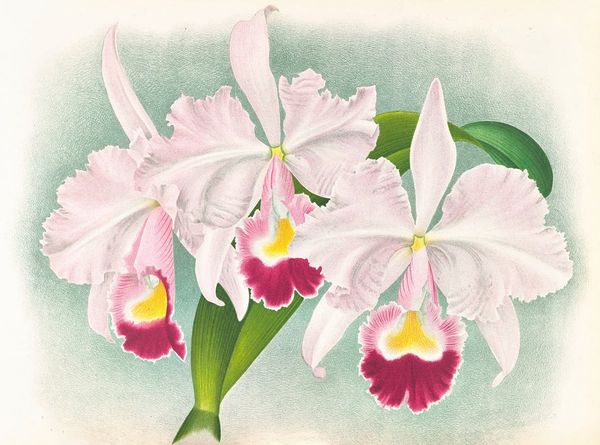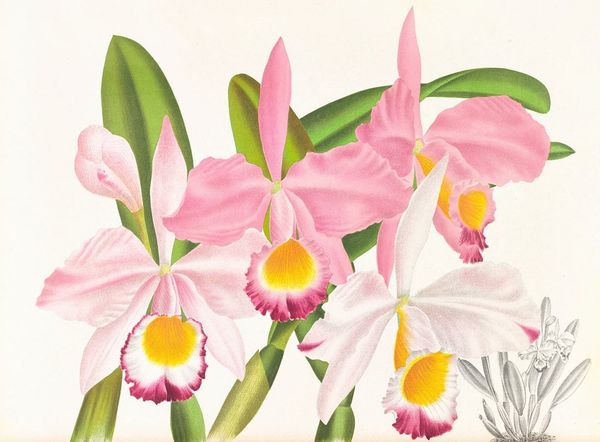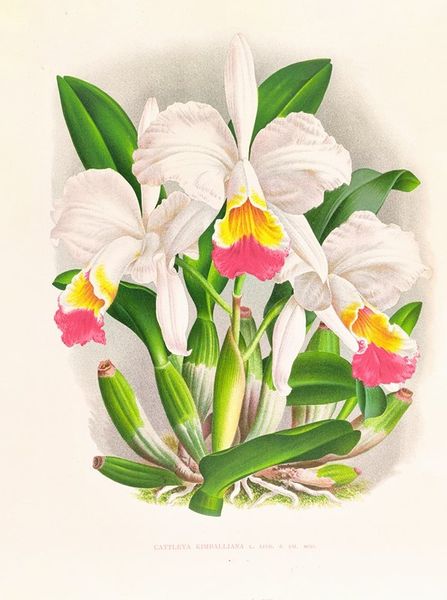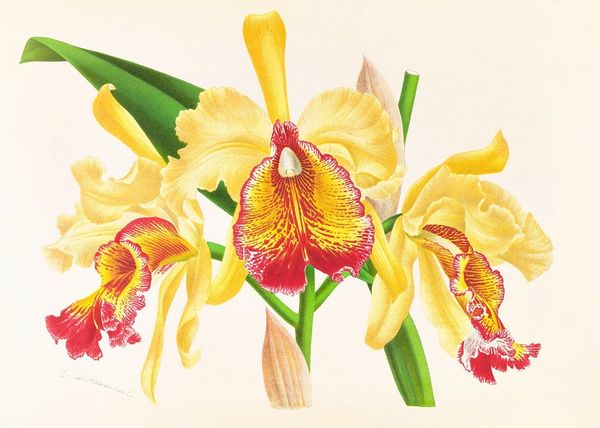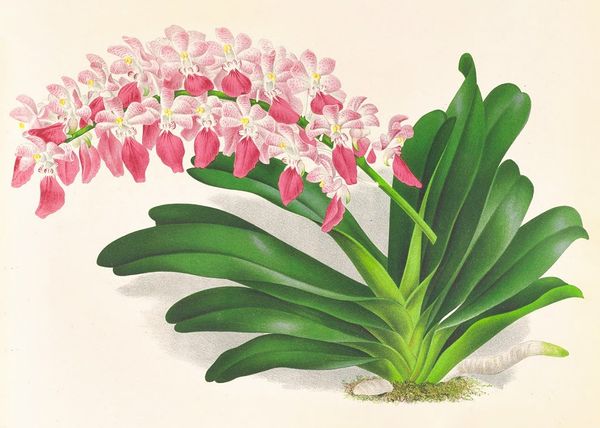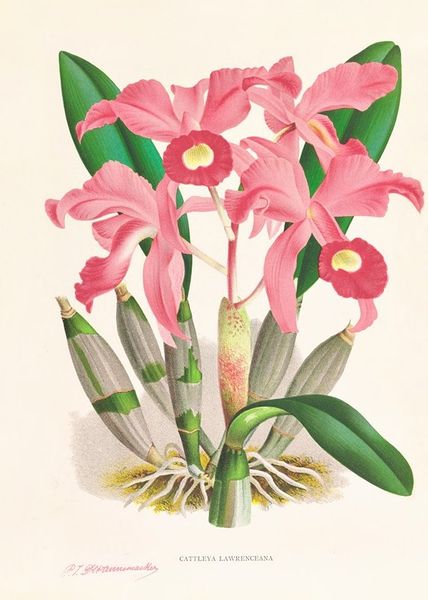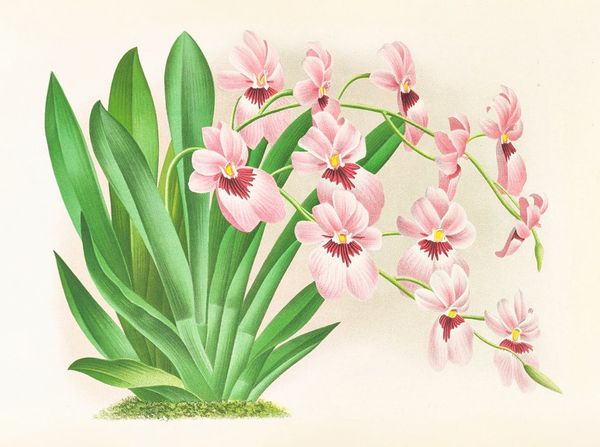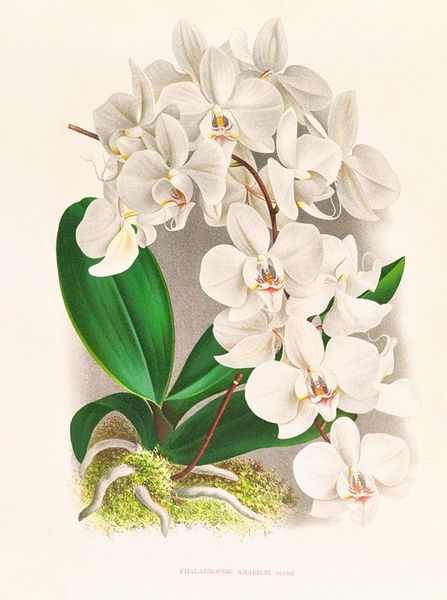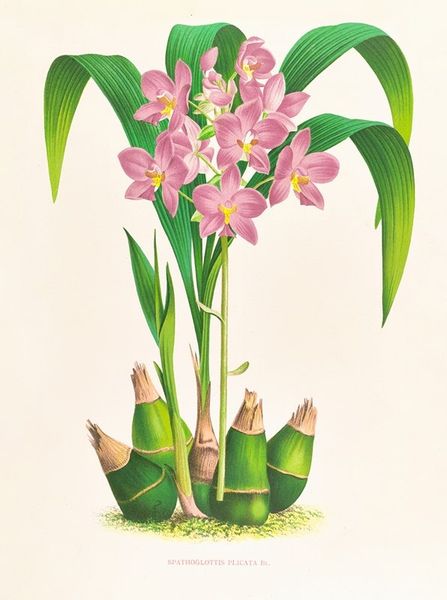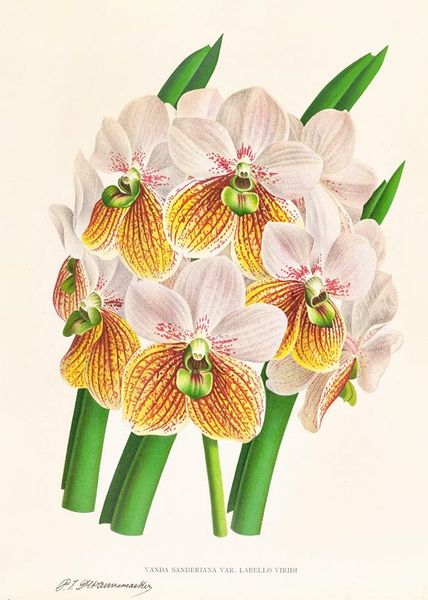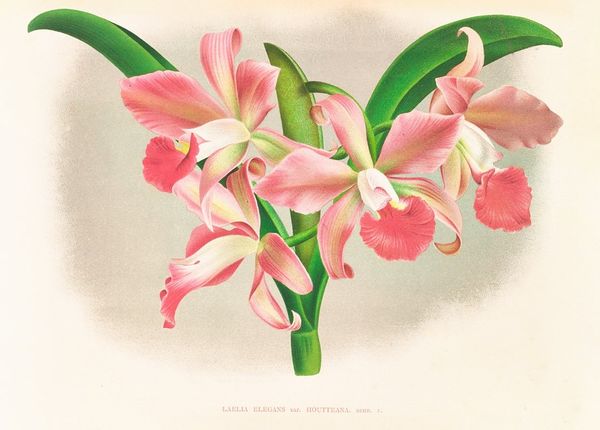
drawing, ink
#
drawing
#
ink
Copyright: Public Domain: Artvee
Curator: The Cattleya gigas drawing, dating from between 1885 and 1906, created with ink by Jean Jules Linden, presents such an aesthetically pleasing arrangement. Editor: My first impression is one of delicacy; the almost pastel pink hues suggest fragility, countered by the more vibrant carmine lip, and its scale seems almost monumental. I want to know how the work was constructed. Curator: Well, we need to consider Linden’s social and historical situation in that period. Orchid collecting was really coming into fashion in elite society, reflecting imperial desires to take possession of the rare and beautiful from far-flung regions. This specific variety would have been highly coveted. Editor: The fact that it's an ink drawing provides insight. It signals a controlled means of production, a scientific approach in capturing the textures and forms, and maybe speaks to a pre-photography documentation process. What does it say about labor here, the making of the drawing versus, say, cultivation? Curator: That’s interesting. Certainly, the drawing acts as a record of scientific observation, yet one must not overlook the possible socio-economic dynamics behind orchid mania. The work, in some ways, commodifies nature itself. It echoes prevailing values about controlling resources and exoticizing people and cultures in the name of science. Editor: So the materiality embodies cultural values... Thinking about the act of reproducing something like an orchid in ink emphasizes a process that moves value from cultivation, growing, and global trade toward the act of visual documentation, that itself, I think, reinforces the consumption, possession, and knowledge transfer, from the South to the West. Curator: Absolutely. The exquisite detail suggests a close study not just of form but of value systems. Linden isn’t merely recording; he’s interpreting, perhaps inadvertently perpetuating an ideology. It reminds me of contemporary discussions surrounding biodiversity and neocolonialism. Editor: Ultimately, reflecting on the labor embedded, its method of construction, this drawing helps us to reassess how seemingly innocuous practices such as botanical illustration could embody global socio-economic relationships. Curator: Precisely. The drawing enables a deeper dive into power dynamics masked behind scientific or aesthetic interests. A lovely looking picture with a strong symbolic undercurrent!
Comments
No comments
Be the first to comment and join the conversation on the ultimate creative platform.
